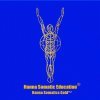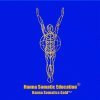QuestionQUESTION: About a year and a half ago, I and some others climbed a modest sized mountain (3000 feet) by a fairly precipitous ridge. It involved little actual 'climbing'; mostly walking and scrambling. Conditions turned bad and I may have overexerted myself, beyond what I would have considered sensible, while helping others. I also became emotionally overwrought, through worry.
When we got back, I felt fine. The next day, we spent the afternoon rock climbing, under supervision. Again, I may have overexerted myself, particularly the extent to which I reached up with my feet, well above the level of my midriff, to secure a toehold and winch myself upwards.
The next day, in a swimming pool, my groin was too sore for more than a token attempt at breast stroke. The pain was entirely new to me - a radiating, electrical sensation, down my inner thighs.
A week or two later, I was aware I wasn't recuperating as fast as normally from my exertions.
A month later, I cottoned on to the fact that my range of movement had decreased considerably in my pelvic area. For a start, I could no longer squat. It wasn't just that squatting had become painful - I simply couldn't do it, not even nearly. There seemed to be a muscular resistance somewhere that was providing a barrier. My knees, hips and ankles all operated fluidly and easily. I sank to chair level with no difficulty. I went a little further, and then got stuck. It was as if my belly had increased in size and was pushing against my thighs, preventing further forward movement. Ordinarily, I would have been able to slot my armpits over my knees and rest in that position.
I felt restricted while walking, too. There was a sense of tightness and pain in the crease between the top of my thigh and my pelvis. I had difficulty getting on and off my bike, putting trousers on, drying my toes after a shower. All these movements caused spasms of pain that radiated from deep inside my groin, down the front and side of my thighs, to my knees.
Six months later found me no further forward in terms of rehabilitation. A part of me seemed to have resigned itself to restricted movement. I no longer bounded upstairs, or kicked at imaginary footballs.
I did interminable variants of Yoga, but found it provided only very short term relief, and was painful to do in a way that didn't seem healthy. I heard myself crying out in pain, although it was a pain I had zero familiarity with. It seemed raw, very close to the bone, non muscular. Forcing myself to endure this, the Yoga routines I did took me to a place of temporary comfort, from where I was able for a short period of time to move freely and easily. I could drop into a squat with no difficulty - for about an hour. After that, I could feel my body stiffening up again.
Overall, the sensation I lived with was as if my inner skin, the sheathing that surrounded my muscles, had shrunk in my entire pelvic area, so that all movement potential was reduced. It was as if I was wearing a pair of internal cycling shorts several sizes too small made of a material that appeared to tighten in situ.
As well as the Yoga, I did plenty of regular stretching, and relaxation work. The stretching helped, temporarily. The relaxation had the disorienting effect of inducing cramping, whenever it appeared that things were getting freer.
Then I discovered Trigger Points. I got excited by this, as I found plenty of painful spots; but all that seemed to happen was the painful spots got less painful, while my condition stayed much the same.
A year on, nothing much has changed. I still stretch, for relief; but nothing I've done in a year and a half has enabled me to get rid of the radiating pain that shoots down the front and occasionally sides of both thighs and terminates at the knee.
One striking thing: whenever I lie on my back and draw my knee up towards my chest and pull it towards me in a stretch, the associated foot seems to take on a life of its own, flipping and shaking about wildly. It's like a reflex is being set off.
Although, as I said, I probably overexerted myself when climbing, I never had any even remotely painful moments, on that day, or the day after, or any sense that I had torn, or even strained, anything. It was only afterwards that I began to experience pain. Although I can't begin to understand it, it felt much more as if my muscles decided to tighten up to stop me overdoing things in the same away again, in case I did do myself an injury - a sort of protective mechanism, which seems to have been on permanant red alert ever since!
 Hanna Somatic Educatio
Hanna Somatic Educatio
ANSWER: Hello, Nicolas,
You've understood the situation correctly: it's a protective mechanism, actually a conditioned postural reflex, that has you in its grip.
You've also see what few people have recognized: the limitations of stretching.
To clarify, may I direct you to my article, Beyond Stretching, at
http://somatics.com/stretch.htm
The way out is a process of self-training in muscular control, whereby you can ease the grip, not by stretching, but by improving control over muscular tension, a very different thing.
If you wish, I can make recommendations for a self-treatment program and/or for a clinician in a specialty who can help.
I don't think it's that difficult a situation, when you take the correct approach.
Please also see the entry on Migrating Pain at
http://somatics.com/conditions.htm
regard,
Lawrence Gold
---------- FOLLOW-UP ----------
QUESTION: I would certainly appreciate recommendations for self treatment. I gather from your site your work has links with Feldenkrais. I have a few recordings of Awareness through movement exercises, from much earlier in my life; but although they give me temporary relief, in this instance I haven't found them to be of lasting benefit. It may be I am not repeating the exercises often enough. Each recording last one hour and it can be difficult to find the time.
Answer
 Hanna Somatic Educatio
Hanna Somatic Educatio
Hello, Nicolas.
Yes, the roots of Hanna somatics go back to Feldenkrais. However, the somatic exercises I have developed are an advance upon those of both Feldenkrais and Hanna.
The appropriate program would be Free Your Psoas, at
http://somatics.com/page7.htm#psoas
You may test the approach by getting started with the first somatic exercise, downloadable at
http://somatics.com/psoas_muscle_pain_treatment.htm
That page also gives an overview of the remaining exercises of the program.
regard,
Lawrence Gold



